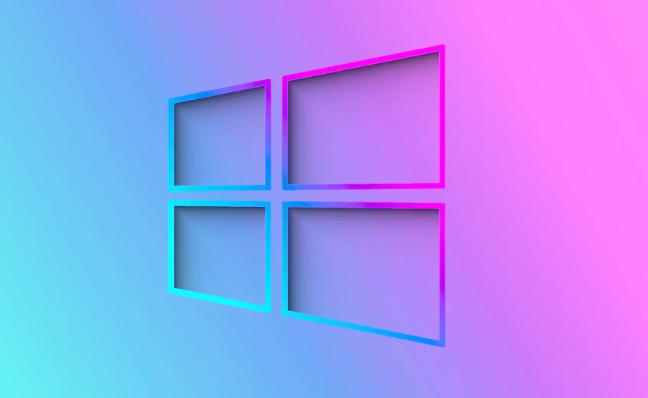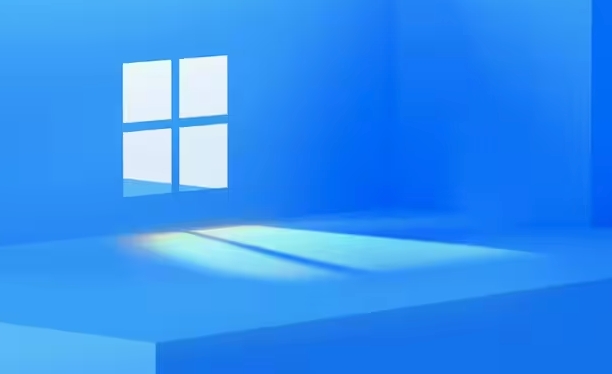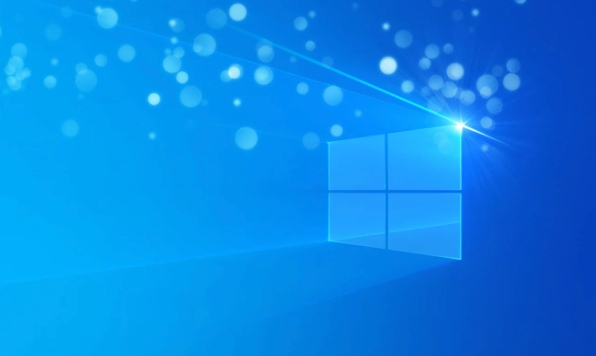How to fix a stuck Windows restart screen?
Don't rush to reinstall the system when the computer is stuck in the Windows restart interface. You can try the following methods first: 1. Force shutdown and then restart. Apply to the situation where the update is stuck. Repeat two or three times or can skip the lag; 2. Enter the safe mode to check, select Start repair or system restore through troubleshooting. If you can enter safe mode, it may be a driver or software conflict; 3. Use the command prompt to repair the system files, enter the three commands sfc and dism in the recovery environment to repair the damaged files; 4. Check the recently installed hardware or driver, unplug the non-essential devices or uninstall the new driver to eliminate incompatibility issues. In most cases, the above steps can solve the phenomenon of restart lag. If it really doesn’t work, consider reinstalling the system and paying attention to backing up data in advance.

It is really annoying to get stuck in the Windows restart interface, especially when you are in a hurry to use it. This situation is usually not caused by a broken hardware, but by a system file error, driver conflict or update failure. Don't rush to reinstall the system, try the following methods first.

1. Force shutdown and restart (most basic but effective)
Many people's first reaction to this problem is to wait, but in fact, it is useless to wait too long. You can press and hold the power button directly for 10 seconds to force shut down, repeat it two or three times before turning on the power normally. This operation can sometimes skip the stuck interface.

- Applicable scenario : Just updated the system or suddenly stuck
- Note : Although there are certain risks in forced closing opportunities, it is worth a try in this case
2. Enter safe mode to troubleshoot problems
If forced restart is useless, try entering safe mode. Safe mode only loads the most basic drivers and services, which helps troubleshoot whether it is caused by recently installed software or drivers.
How to enter:

After two forced restarts, the "recovery environment" should be automatically entered during the third normal startup.
Then select Troubleshooting → Advanced Options → Start Repair or System Restore
Tips : If you have created a restore point before, the system restore can quickly fall back to the state before the problem occurred.
If you can enter safe mode but cannot boot normally, it is likely that a third-party driver or software conflicts will occur.
3. Use the command prompt to repair system files
If you can enter the recovery environment (that is, the blue troubleshooting interface), you can try using the command prompt to repair the system files.
The steps are as follows:
- Select Troubleshooting → Advanced Options → Command Prompt
- Enter the following three commands, and press Enter every time after entering:
sfc /scannow /offbootdir=C:\ /offwindir=C:\Windows dism /image:C:\ /cleanup-image /checkhealth dism /image:C:\ /cleanup-image /restorehealth
These three-line commands mean that the system checks and repairs corrupt system files by itself. This method can usually solve the problem if it is caused by an update interrupt or a corruption of the file.
4. Check the recently installed hardware or driver
If you recently plug in a new device (such as graphics card, USB drive, external hard drive), or manually update a driver, it may also cause the system crash.
- Try to uninstall the recently installed driver in safe mode
- Or unplug non-essential external devices and keep only the keyboard, mouse and monitor cable
Sometimes an incompatible driver can prevent you from entering the system, especially after Windows is automatically updated.
Basically these common ways of handling it. In most cases, the above steps can be solved. If it really doesn't work, then consider resetting the system or reinstalling it. But remember to back up important data before starting - if you can still enter safe mode.
The above is the detailed content of How to fix a stuck Windows restart screen?. For more information, please follow other related articles on the PHP Chinese website!

Hot AI Tools

Undress AI Tool
Undress images for free

Undresser.AI Undress
AI-powered app for creating realistic nude photos

AI Clothes Remover
Online AI tool for removing clothes from photos.

Clothoff.io
AI clothes remover

Video Face Swap
Swap faces in any video effortlessly with our completely free AI face swap tool!

Hot Article

Hot Tools

Notepad++7.3.1
Easy-to-use and free code editor

SublimeText3 Chinese version
Chinese version, very easy to use

Zend Studio 13.0.1
Powerful PHP integrated development environment

Dreamweaver CS6
Visual web development tools

SublimeText3 Mac version
God-level code editing software (SublimeText3)

Hot Topics
 Windows night light not working
Jul 29, 2025 am 05:34 AM
Windows night light not working
Jul 29, 2025 am 05:34 AM
Night mode cannot adjust the color temperature or does not take effect, which is usually caused by system settings or driving problems. First check whether night mode is actually enabled: go to Settings > System > Display, confirm that the "Night Mode" switch is on. If the gray is not selected, it may be a problem with the graphics card driver or system version; secondly, if the color temperature adjustment is invalid, you can try restarting the Explorer, use the registry to repair, reset the night mode settings, and turn off the conflicting third-party software; finally check the time and geographic location permissions: Ensure that the location is allowed in the privacy settings, and enable the automatic time and time zone setting function.
 How to assign a drive letter in Windows
Jul 30, 2025 am 04:54 AM
How to assign a drive letter in Windows
Jul 30, 2025 am 04:54 AM
ToassignadriveletterinWindows,useDiskManagementorCommandPrompt.2.InDiskManagement,pressWindows X,selectDiskManagement,right-clickthevolumewithoutaletter,choose"ChangeDriveLetterandPaths",clickAdd,selectaletter(avoidA:orB:),andclickOK.3.Alte
 How to create a guest account in Windows
Jul 30, 2025 am 12:55 AM
How to create a guest account in Windows
Jul 30, 2025 am 12:55 AM
ToenabletheGuestaccountinWindows10/11,openCommandPromptasAdministratorandrun"netuserGuest/active:yes".2.TheGuestaccounthaslimitedpermissionsandcannotinstallappsorchangesystemsettings.3.Optionally,createastandarduseraccountviaSettings>Acc
 How to troubleshoot high DPC latency in Windows
Jul 30, 2025 am 02:08 AM
How to troubleshoot high DPC latency in Windows
Jul 30, 2025 am 02:08 AM
UseLatencyMontoidentifyhighDPC/ISRtimesandpinpointproblematicdrivers.2.UpdateorrollbacknetworkandWi-Fidrivers,especiallyfromIntel,Realtek,orKiller,anddisableunusedBluetooth.3.Updateordisablehigh-DPChardwaredriverssuchasUSB,audio,graphics,orNVMecontro
 How to find the installation date of Windows
Jul 30, 2025 am 04:57 AM
How to find the installation date of Windows
Jul 30, 2025 am 04:57 AM
UseCommandPromptbytypingsysteminfo|find"OriginalInstallDate"toinstantlyseetheoriginalWindowsinstallationdate.2.Alternatively,usePowerShellwith(Get-ItemProperty-Path"HKLM:\SOFTWARE\Microsoft\WindowsNT\CurrentVersion").InstallDatean
 How to set up an FTP server in Windows
Jul 30, 2025 am 04:02 AM
How to set up an FTP server in Windows
Jul 30, 2025 am 04:02 AM
InstallIISandFTPcomponentsviaWindowsFeatures,ensuringFTPService,FTPExtensibility,andIISManagementConsoleareenabled.2.CreateadedicatedFTPfolder(e.g.,C:\FTP),grantIIS_IUSRSModifypermissions,andoptionallyaddspecificusers.3.InIISManager,addanFTPsitebyspe
 How to create a system image in Windows
Jul 30, 2025 am 04:57 AM
How to create a system image in Windows
Jul 30, 2025 am 04:57 AM
OpenBackupandRestoreviaWindows S,typeBackupandRestore,clickCreateasystemimage.2.Savetheimagetoanexternalharddrive(recommended),selectitfromthedropdown,andclickNext.3.Confirmincludeddrives(systemreservedandC:bydefault),addothersifneeded,thenclickNext.
 How to install Windows on a Mac without Boot Camp
Jul 31, 2025 am 11:58 AM
How to install Windows on a Mac without Boot Camp
Jul 31, 2025 am 11:58 AM
Without BootCamp, installing Windows on Mac is feasible and works for different chips and needs. 1. First check compatibility: The M1/M2 chip Mac cannot use BootCamp, it is recommended to use virtualization tools; the Intel chip Mac can manually create a boot USB disk and install it in partition. 2. Recommended to use virtual machines (VMs) for M1 and above chip users: Windows ISO files, virtualization software (such as ParallelsDesktop or UTM), at least 64GB of free space, and reasonably allocate resources. 3. IntelMac users can manually install it by booting the USB drive: USB drive, WindowsISO, DiskU is required







